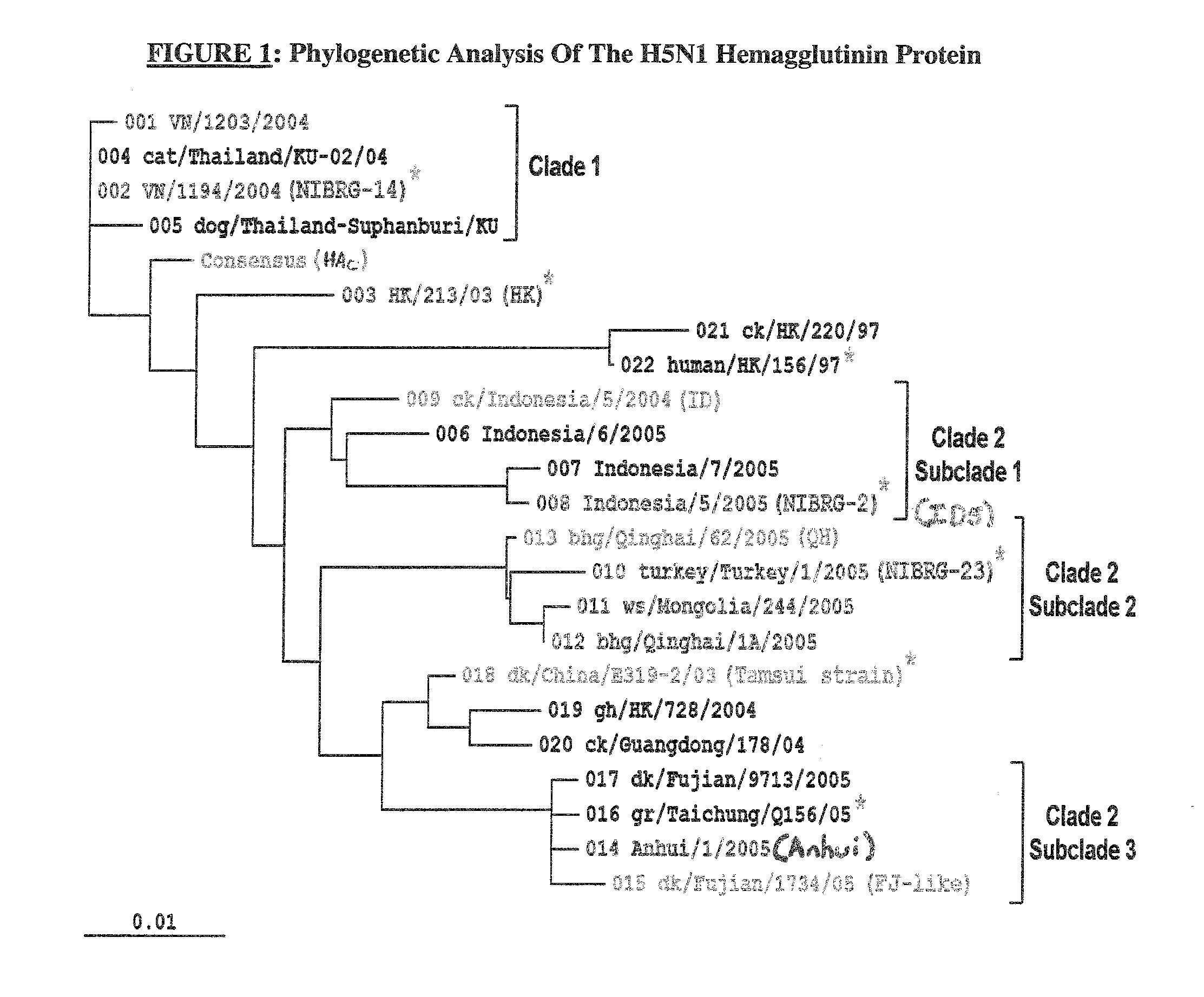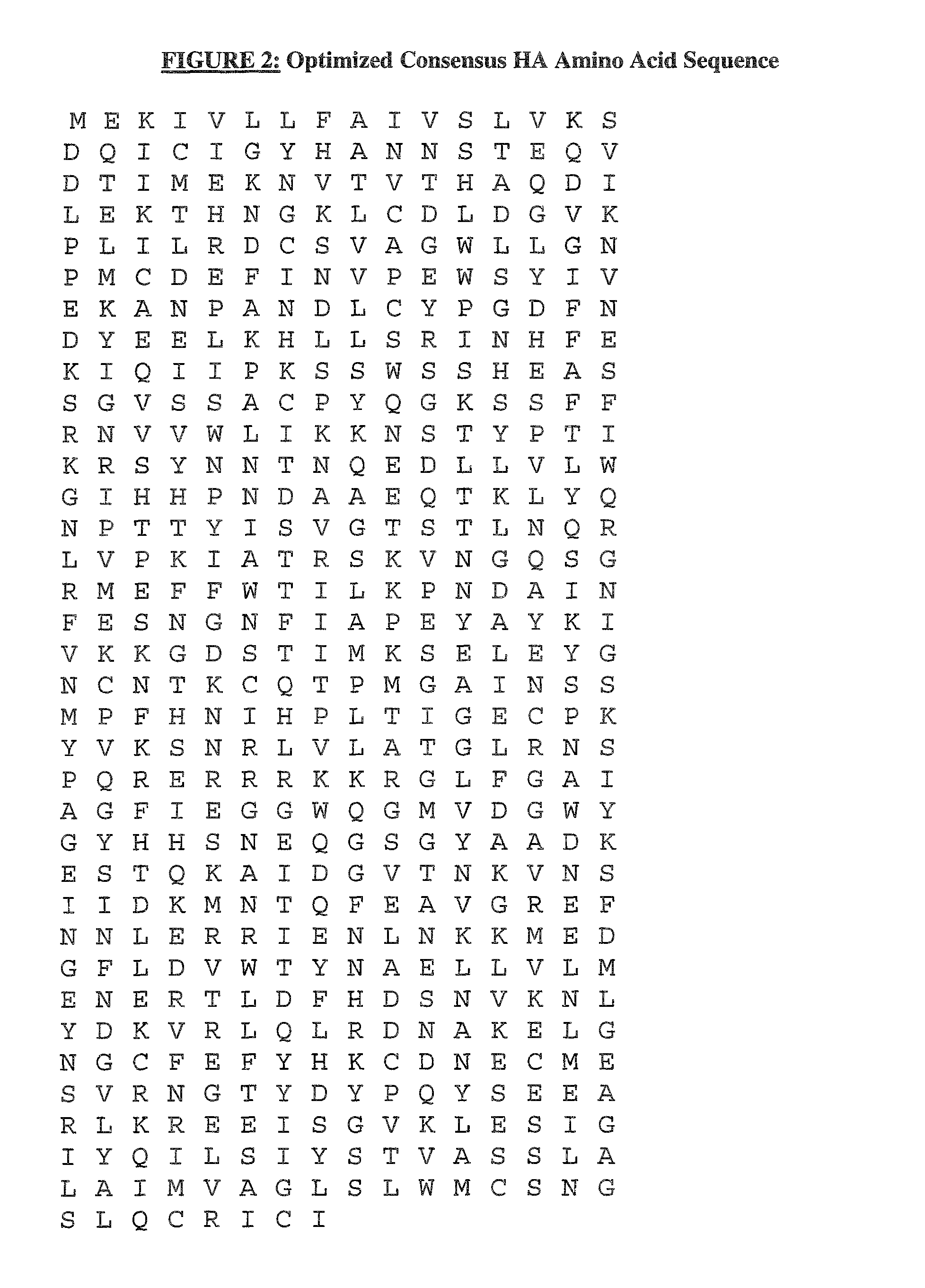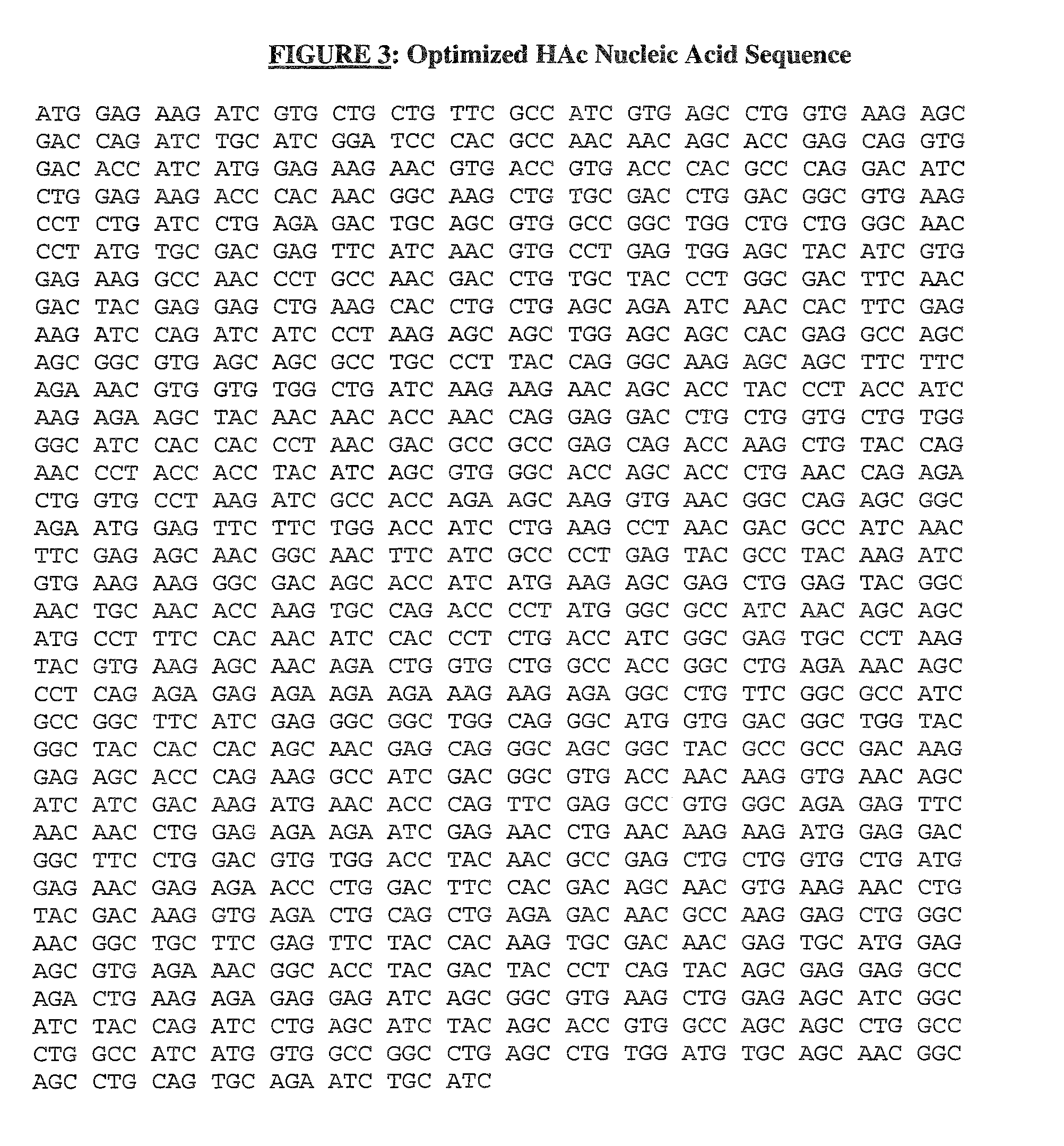Flu vaccines and methods of use thereof
a technology of flu vaccine and hemagglutinin, applied in the field of flu vaccine, can solve the problems of reducing the effectiveness of humoral and cell-based immune responses, constant and permanent changes in the antigenic composition of the virus, and lack of immunity
- Summary
- Abstract
- Description
- Claims
- Application Information
AI Technical Summary
Benefits of technology
Problems solved by technology
Method used
Image
Examples
example 1
Construction of a Consensus Sequence
[0263]There are more than 700 hemagglutinin genes (HA) of H5N1 virus available in public databases. A remaining hurdle in H5N1 vaccine development is the lack of cross-protection between different viral strains. H5N1 viruses have been classified into different clades suggested by the WHO. To date, H5N1 vaccines are protective against viral infection with the same clade, and not viruses of another clade. For example, the Vietnam vaccine strain could induce full protection against itself, but fails to induce protective immunity against an Indonesia H5N1 strain. Therefore, in order to cover the genetic variability and thus induce cross-protection across different H5N1 strains, it was desirable to deduce a consensus sequence for protection studies, as well as to develop several additional isolated isolated nucleotide sequences that could be administered simultaneously so as to further broaden scope of protection against viral challenge.
[0264]A phyloge...
example 2
Characterization of the Consensus Sequence
[0267]The expression levels of the codon-optimized DNA vaccines were monitored in HEK293 cells (FIG. 8A), as well as the ability of DNA vaccine-mediated HA receptor upregulation to facilitate hemagglutination (FIG. 8B). HEK293 cells expressing the consensus HA exhibited comparable hemadsorption ability to that of HAs of H5N1 viruses.
example 3
Humoral and Cellular Immununogenicity of the Consensus Sequence
[0268]HAc polynucleotide vaccine was highly immunogenic, as determined by BALB / c mice immunization with HAc (in this example, via pHAc) in terms of serum antibody titer production. The endpoint antibody titer after one injection was between 1:400 and 1:1,600, whereas the titer was greater than 1:10,000 following two injections (FIGS. 9 A, B). Endpoint Ab titer also increased following a second vaccination (FIG. 9C).
[0269]ELISPOTs of CD8 cells indicated that HAc vaccination also indirectly induced copious amounts of IFN-γ, in response to subsequent priming with an HA peptide (FIGS. 10A, B).
PUM
| Property | Measurement | Unit |
|---|---|---|
| size | aaaaa | aaaaa |
| antigenic composition | aaaaa | aaaaa |
| affinity | aaaaa | aaaaa |
Abstract
Description
Claims
Application Information
 Login to View More
Login to View More - R&D
- Intellectual Property
- Life Sciences
- Materials
- Tech Scout
- Unparalleled Data Quality
- Higher Quality Content
- 60% Fewer Hallucinations
Browse by: Latest US Patents, China's latest patents, Technical Efficacy Thesaurus, Application Domain, Technology Topic, Popular Technical Reports.
© 2025 PatSnap. All rights reserved.Legal|Privacy policy|Modern Slavery Act Transparency Statement|Sitemap|About US| Contact US: help@patsnap.com



